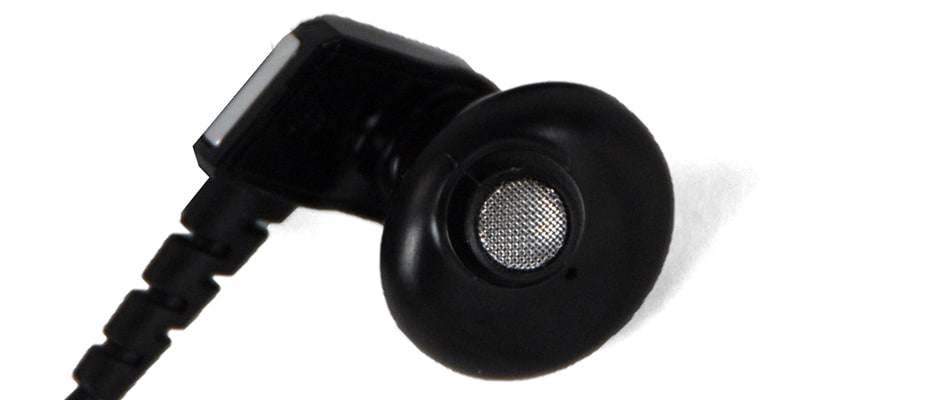Introduction
Product Overview
{{section_header}}{{section.name}}{{/section_header}}
Get to know the Sound Clarity SI550As
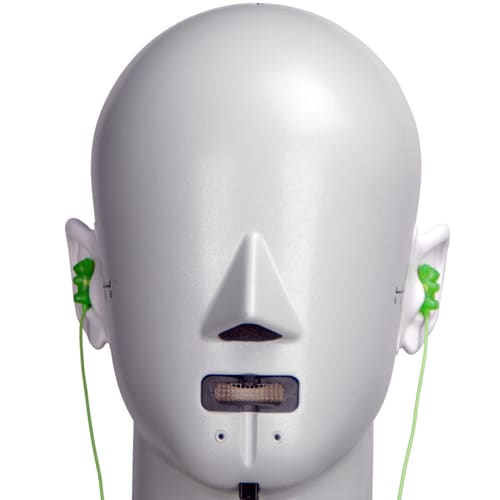
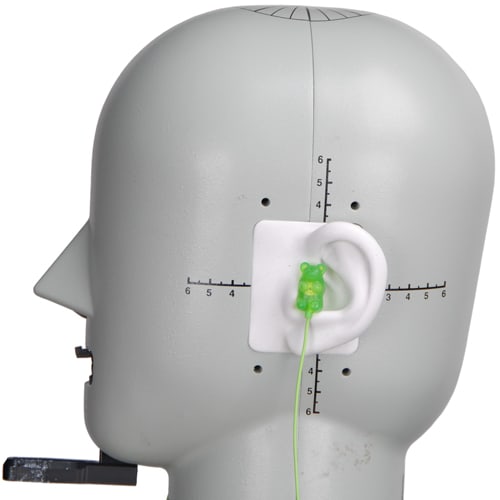
Speakers
{{section_header}}{{section.name}}{{/section_header}}
Here we see the mesh gate guarding the nozzle. The mesh seems to be fine enough to prevent any biological waste from getting into the speaker element.
Back
{{section_header}}{{section.name}}{{/section_header}}
While in-ears aren't usually flashy or anything, the {{product.model}}s do offer you a bit of brushed metal to show that your in-ears are polished and professional (looking).
Cable
{{section_header}}{{section.name}}{{/section_header}}
The {{product.model}}'s cable consists of a lightweight wire, coated in black rubber. Fairly standard.
This cable terminates in the ubiquitous 1/8th inch plug for use in mobile devices.
If you're worried about the cableguards, take solace in the fact that they are made of a relatively thick rubber, protecting the leads into the ear buds themselves.
In the Box
{{section_header}}{{section.name}}{{/section_header}}
If you've purchased the {{product.model}}s, you will find a carrying case, 3 sleeve sizes, a cable wrap, and assorted documentation in the package.
Durability
{{section_header}}{{section.name}}{{/section_header}}
As these are entry-level in-ears, there really aren't many bells and whistles to the design of the {{product.model}}s. For example, the cables are not detachable, and the cables themselves are also not very robust. In-ears are typically not all that durable, and the {{product.model}}s very much follow this trend.
Aesthetics
{{section_header}}{{section.name}}{{/section_header}}
These aren't the most attractive things in the world, but then again, they're pretty small compared to on-ears and over-ears, so this shouldn't be a big concern. However, they do protrude from your ear quite far.
Frequency Response
{{section_header}}{{section.name}}{{/section_header}}
While the frequency response does trail off in the high end, the {{product.name}} maintains a relatively even frequency response with few if any erratic shifts that will be audible to the user. Despite its somewhat less than ideal highs, the bass emphasis is notable, which will provide your inner ear with slightly increased ability to hear high frequencies, but not much. Not bad, Able Planet.
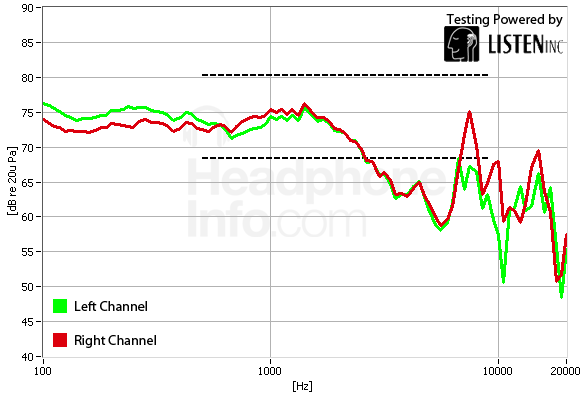
Click here for more information on our frequency response test.
Distortion
{{section_header}}{{section.name}}{{/section_header}}
While there is a very minimal amount of distortion, overall it's not something you're likely to hear, as i never strays into the range where it would be audible.
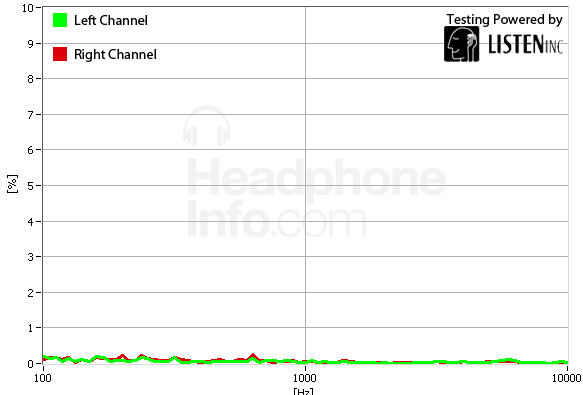
Click here for more information on our frequency response test.
Tracking
{{section_header}}{{section.name}}{{/section_header}}
Despite a few minor blemishes, the tracking response of the {{product.name}}s is even. You will not notice any channel preference shifts that are audible.
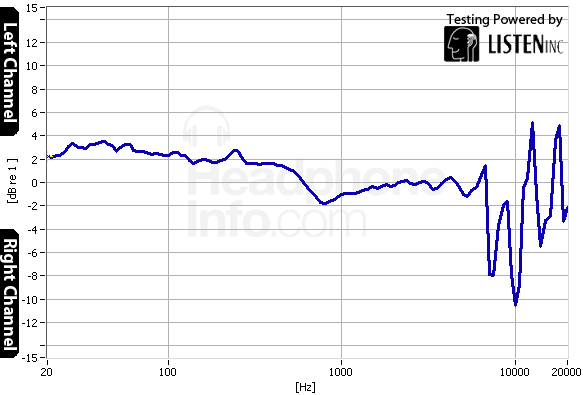
Click here for more information on our frequency response test.
Isolation
{{section_header}}{{section.name}}{{/section_header}}
While in-ears typically attenuate a good amount of sound, the {{product.name}}s offer a little less isolation than some of the other entry-level in-ears we've tested. Still, they block out a much wider range of frequencies from the world outside than just about any other non-noise canceling on or over-ears, so these are a better bet if you want to only want to hear our music.
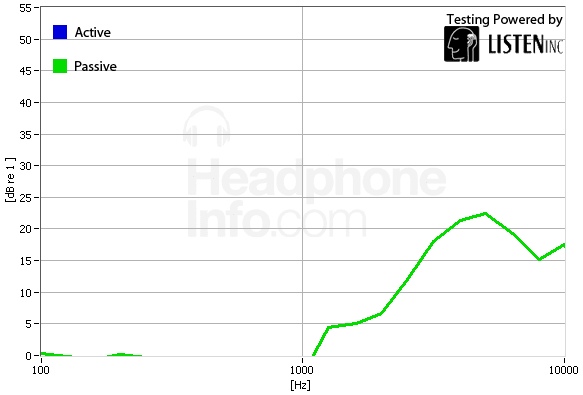
Click here for more information on our isolation test.
Leakage
{{section_header}}{{section.name}}{{/section_header}}
For whatever reason, the {{product.name}}s also leak a bit of sound at volume, which is not typical of in-ears. Still, you're fairly unlikely to aggravate people around you with your tunes.
Click here for more information on our leakage test.
Maximum Usable Volume
{{section_header}}{{section.name}}{{/section_header}}
The {{product.name}}s have an impressively high maximum SPL of 123.48dB before hitting the magic 3% total harmonic distortion level, but we advise all of our listeners to refrain from testing this out on their own (unless they use a robot). You could seriously damage your hearing almost instantaneously.
Click here for more on our maximum usable volume test
Short-Term Use
{{section_header}}{{section.name}}{{/section_header}}
In the short term, in-ear headphones are typcially quite uncomfortable for most people, as you're essentially jamming plastic and neodymium into your ear canal, which was never meant for anything to go inside of it. Consequently, the {{product.name}} isn't exactly comfortable, but to its credit, it doesn't exactly dig into any part of your ear to an unreasonable degree.

Extended Use
{{section_header}}{{section.name}}{{/section_header}}
Over time the fit doesn't change, and the {{product.name}}s are unlikely to fall out of your ear canal, so it nets the same score here.
Customizability
{{section_header}}{{section.name}}{{/section_header}}
Aside from changing sleeve sizes, there really isn't much you can do to customize your {{product.model}}s. Given that they're in-ears, they really weren't going to be very prominent on your head anyways.
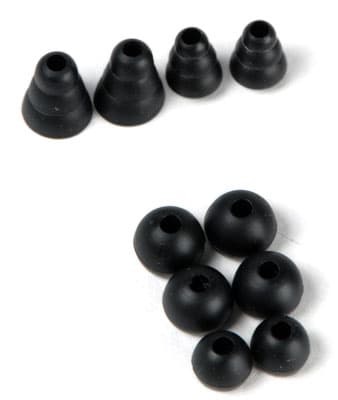
Cable Connectivity
{{section_header}}{{section.name}}{{/section_header}}
You're not likely to need or want to use these in-ears with a home hi-fi audio setup with a 1/4th inch plug, so the {{product.model}}'s 1/8th inch plug should more than fit your needs.
Portability
{{section_header}}{{section.name}}{{/section_header}}
In-ears are light and portable, and it helps greatly when there's a carrying case to stow the potential rat's nest of tangled cables inside. As another plus, the case can fit into a large pocket, meaning its size won't really be a big concern.
Maintenance
{{section_header}}{{section.name}}{{/section_header}}
Aside from removing the sleeves to wipe down the mesh gates, there really isn't a whole lot you as a user can do to maintain the {{product.name}}s, but seeing how they're entry-level headphones, this should be expected.
Other Features
{{section_header}}{{section.name}}{{/section_header}}
Remote & Mic
Along the top of the cable to the {{product.name}}s is the remote, with mic and function button. It's not overly complicated, but gives you the flexibility to use your headphones with a smartphone, which is becoming a more and more common feature in headphones. Be careful not to tug these out of your ears, as the added solder points necessary to add a remote means added potential failure points.
Design
{{section_header}}{{section.name}}{{/section_header}}
While no in-ears are truly very durable, the Vibrato Remotes have a kevlar weave over their cables, ensuring they won't snap or kink without extreme force. Both sets of headphones have an in-line remote, but the V-Moda in-ears have volume buttons, where the {{product.model}}s do not.
Frequency Response
{{section_header}}{{section.name}}{{/section_header}}
While the V-Modas are great for bass lovers, the {{product.model}}s' response is flatter in the low end, though they do underemphasize the high end while the Vibrato Remotes do not.
Distortion
{{section_header}}{{section.name}}{{/section_header}}
Neither set of cans has any trouble with distortion.
Tracking
{{section_header}}{{section.name}}{{/section_header}}
While neither pair of in-ears has perfect tracking, they both have inaudible errors, and shouldn't distract you with tracking issues.
Isolation
{{section_header}}{{section.name}}{{/section_header}}
Both isolate fairly well, but the Vibrato Remotes attenuate more ambient noise.
Comfort
{{section_header}}{{section.name}}{{/section_header}}
In-ears are typically not that comfortable, and both sets of headphones are very similar in comfort level, as they put pressure on your ear canals to stay in place.
Verdict
{{section_header}}{{section.name}}{{/section_header}}
While the Vibrato Remotes do offer a performance bump, they also cost up to $60 more than the {{product.name}}s. While the V-Modas are better for bass lovers, the {{product.name}}s do fine on their own. Just be aware that you do gain quite a bit by shelling out more money for the Vibrato Remotes if you have the extra cash on hand.
Design
{{section_header}}{{section.name}}{{/section_header}}
While both the Sony headphones and {{product.name}}s are entry-level in-ear headphones, the Sony cans have a different driver type, and no remote. Both retail for about the same price, so let's explore their performance points, shall we?
Frequency Response
{{section_header}}{{section.name}}{{/section_header}}
While both responses are generally flat to a certain degree, the {{product.name}}s underemphasize the high end, while the XBA-1s stay within our ideal limits very well.
Distortion
{{section_header}}{{section.name}}{{/section_header}}
The {{product.model}}s have a measurably lower level of distortion than the XBA-1s do, but the Sony cans still don't stray into the realm of audibility with their distortion.
Tracking
{{section_header}}{{section.name}}{{/section_header}}
While neither set of headphones has a perfect tracking response, the errors in channel preference are almost all below 2dB, meaning you will never hear it.
Isolation
{{section_header}}{{section.name}}{{/section_header}}
For whatever reason, the {{product.name}}s do not block out as much passive noise as the XBA-1s do.
Comfort
{{section_header}}{{section.name}}{{/section_header}}
No in-ears truly are a joy to jam into an orifice that was never meant to play host to foreign objects, but the fit of in-ear headphones in particular are notoriously variable based on your own anatomy, so see if you can try them on before making a comparison for yourself.
Verdict
{{section_header}}{{section.name}}{{/section_header}}
Because both headphones are at similar price points, it's not unreasonable to assume that at any point one might be able to be found for a better price than the other, so ultimately the choice is yours. Still, you should be aware that the XBA-1s have a better frequency response and isolation than the {{product.name}}s do, but if you'd like to use your headphones as a headset, the {{product.name}}s are the only one of the two that has a remote.
Design
{{section_header}}{{section.name}}{{/section_header}}
While both are relatively similar in design, the Sennheiser cans offer a little more versatility in their customizability than do the {{product.name}}s, but ultimately cost a lot more than the Able Planet cans. If budget is a limiting factor, your choice between the two might be made before you even give them a shot.
Frequency Response
{{section_header}}{{section.name}}{{/section_header}}
The {{product.name}}s have the flatter response in the low end, but if you're a big fan of bass, you might want to give the Sennheisers a shot, as they overemphasize lower frequencies to a large degree, but they don't skimp on the highs either.
Distortion
{{section_header}}{{section.name}}{{/section_header}}
Neither set of in-ears has any issue with distortion.
Tracking
{{section_header}}{{section.name}}{{/section_header}}
While it's true that neither set of headphones has perfect tracking, you're not likely to notice any audible channel preference errors unless you are a robot.
Isolation
{{section_header}}{{section.name}}{{/section_header}}
The MM80is block out a bit more sound overall than the {{product.name}}s do.
Comfort
{{section_header}}{{section.name}}{{/section_header}}
No two models of headphones are identical, and that much is true of both the MM80is and the {{product.model}}s, so the only way you'll ever know which fits you better is to try them on. After all, everyone has unique auditory anatomy, and what's comfortable for one person can be unbearably painful for another.
Verdict
{{section_header}}{{section.name}}{{/section_header}}
While the MM80is offer a bassier experience than do the {{product.name}}s, they're also over double the cost. While their remote is a little more comprehensive than that of the {{product.name}}s, you can easily get away with the remote on the Able Planet cans for general smartphone use. In the end, it's up to you to weigh the pros and cons, but the {{product.name}}s give you a fair bang for the buck, though you do get a bit more for the extra money spent on the MM80is.
Conclusion
{{section_header}}{{section.name}}{{/section_header}}
Entry-level headphones are almost always a mixed bag, and while the same is true for the {{product.name}}, overall it isn't half bad. Though the highs are relatively underemphasized, the variance isn't egregious compared to the rest of the frequency response: they just stray out of our ideal limits. Beyond that, inaudible distortion and tracking issues mean the headphones will sound good for the entry-level consumer.
That being said, the isolation and leakage on these headphones were a little disappointing compared to other in-ears. They still attenuate a lot better than most over-ears and on-ears, but not well compared to most in-ear headphones. It's a little frustrating, but something most people can live with.
If you're looking for a good pair of entry-level in-ear headphones, you could do a lot worse than the {{product.name}}s. They're not the best, but they get the job done, and overall they are appropriately priced for how they function. If you think that their performance points and price are good for you, head to the store to see if you can try a pair on.
Meet the tester
A seasoned writer and professional photographer, Chris reviews cameras, headphones, smartphones, laptops, and lenses. Educated in Political Science and Linguistics, Chris can often be found building a robot army, snowboarding, or getting ink.
Checking our work.
Our team is here to help you buy the best stuff and love what you own. Our writers, editors, and experts obsess over the products we cover to make sure you're confident and satisfied. Have a different opinion about something we recommend? Email us and we'll compare notes.
Shoot us an email